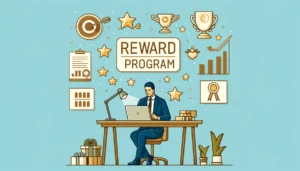HRD Roundtable Report: Leveraging Technology and Automation to Redesign Work
- 5 Min Read
The right digital systems can enable HR teams to have the competitive edge on the war for talent – improving employee experience, freeing up time from heavy admin tasks and informing decision making with solid data. However, when 63% of HR leaders feel their systems aren’t fit for the future (Sage, 2021), how can we […]
- Event Types
- Date of Event: May 19, 2022


The right digital systems can enable HR teams to have the competitive edge on the war for talent – improving employee experience, freeing up time from heavy admin tasks and informing decision making with solid data. However, when 63% of HR leaders feel their systems aren’t fit for the future (Sage, 2021), how can we ensure that we are reaching our full potential?
Led by Keith Williams, HR Digital Transformation and Digital Employee Experience expert, Ex-HR Services Technology Director @ Unilever, and supported by further insights from Lana Ringshall, Sage People, this discussion was conducted under Chatham House Rules. This report will contain the key takeaways, and all participants will be anonymised.
HR tech creates 3 opportunities for business which were discussed during the session:
1 – improving employee experience
2 – automating and improving HR services
3 – enable HR to use data for actionable insights
Employee Experience
How do we define the difference between experience and engagement? The group had varying points of view. Some felt that experience is what we have in the moment, whereas engagement is more about the ongoing relationship. Others felt almost the opposite – engagement is day to day behaviours (e.g. colleague interactions), while experience is what we see over the lifecycle of the employee. It was interesting to see different points of view on something that is so fundamental to HR – how does this impact how we strategize and measure these concepts?
When it comes to measurement, we need to be careful not to over-engage. If we keep relying on the same mechanisms, without making visible changes based on feedback, then people will quickly become fatigued and disillusioned. The group discussed the importance of knowing where you are on your feedback journey. For example, one participant shared how their organisation’s action planning based on last year’s feedback was not very strong. Now that they are asking for feedback again, they aren’t able to share many successes/changes based on previous years as an incentive. Response rates are suffering.
There are several different areas of focus at the moment. One participant shared their work on creating a better system for new joiners. As part of this they have created a social hub within their shared services system to enable new joiners to meet their future colleagues and learn more about working at the business. Ideally, this would be used to grow engagement before the official start date and during the onboarding process. We also heard from an organisation that has found success in their bi-annual surveys, after focussing on giving leaders ownership of following up based on the results. However, they noted that they aren’t really asking about experience – how people are finding their journey – only how people feel about the company on a more values level. Maybe there’s a gap there to explore?
Performance Management and HR Services
The landscape has changed significantly for many organisations over the last few years, and the impact of new ways and expectations of working are still being felt. There needs to be an update to the models that we use for how work happens, and performance management in particular. Technology can play a large role in supporting here – for example enabling more ‘check-in’ styles or tools to encourage day to day recognition without a long formal process. We heard how one participant has created an internal mobility platform that allows people to map their desired pathways and skillsets. This, combined with internal benchmarking filling roles internally has helped employees plan their careers within the organisation more successfully.
We do need to be thoughtful about where and how to apply technology though – one participant shared how they have reduced use in some areas, while bringing in new platforms for others. For example, using a 90-day pulse system, they’re now able to track several factors at a high level from the manager side (e.g. how well someone is living the company values, what advice they would offer) as well as collecting feedback from the employee side. They’ve found this brings clarity to performance, without the lengthy annual appraisal process.
We also heard from a participant who taken has taken it one step further and dropped all technology around appraisals. Instead, they’ve invested in coaching skills for managers, and encouraging in-the-moment conversations and recognition instead.
Automation
Implementation of automation seems to be a bit further behind than other kinds of HR tech. This is for various reasons, including concerns about data privacy and legislation like GDPR. Some elements are also not as advanced as we would like – chatbots for example are often still fairly basic in their AI and take an investment of time to improve.
Integrating Systems
Is the future in integrated, one stop systems? Or are we as consumers used to proliferation? When we think about how many apps we have on our phones for example, there are more and more all the time. However, we can’t forget the value in convenience, especially when a task might not be as rewarding or fun (like a performance review!). There may not be perfect solutions out there yet, but we can certainly aim towards streamlining as much as possible.








